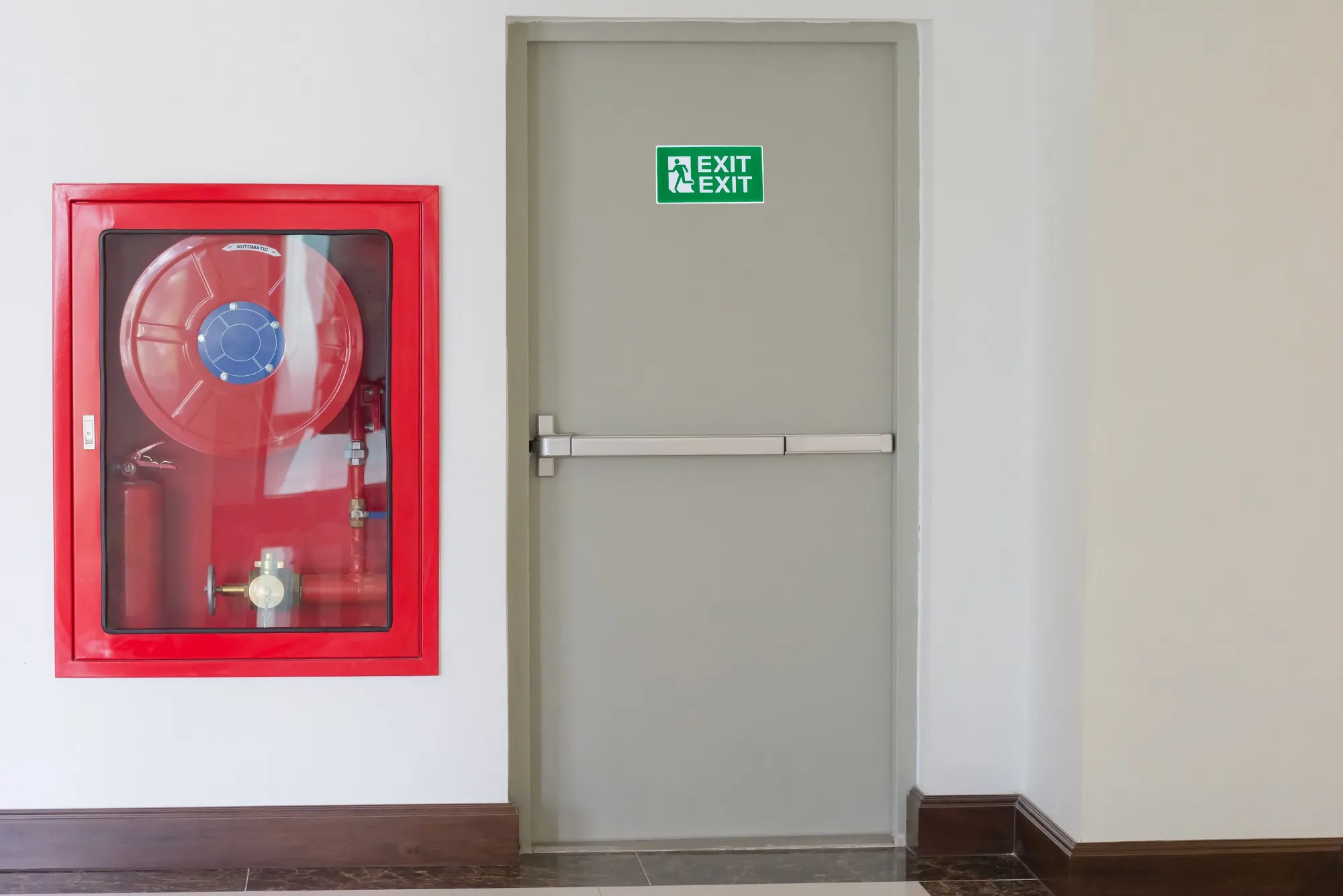When it comes to building safety, few components are as crucial as fire doors. These specialised doors play a fundamental role in containing the spread of fire within a building, offering valuable time for occupants to evacuate safely and aiding firefighters in their efforts to control the blaze. But what exactly distinguishes a fire door from a regular door? In this article, we delve into the key characteristics and standards that define fire doors, shedding light on their importance in safeguarding lives and property.
Understanding the Basics: What is a Fire Door?
A fire door is not merely a standard door; it is engineered and constructed to resist the spread of fire and smoke for a specified period. In the event of a fire, these doors act as barriers, compartmentalising the affected area and preventing the rapid spread of flames and toxic gases. By containing the fire, fire doors buy precious time for occupants to evacuate and for firefighters to intervene effectively.
Key Features of Fire Doors
Fire doors possess distinct features that differentiate them from their conventional counterparts:
- Fire-Resistant Materials: Fire doors are crafted from materials that demonstrate excellent resistance to high temperatures. Typically, they incorporate a solid core made of materials such as gypsum, steel, or vermiculite board, encased within fire-resistant facings such as timber or steel.
- Intumescent Seals: Integral to the effectiveness of fire doors are intumescent seals fitted around the perimeter. These seals expand rapidly when exposed to heat, effectively sealing the gaps between the door and its frame. This prevents the passage of smoke and flames, enhancing the door’s ability to contain the fire.
- Robust Construction: Fire doors are constructed to withstand the intense heat of a fire. They undergo rigorous testing to ensure structural integrity under extreme conditions, including exposure to flames and high temperatures.
- Self-Closing Mechanisms: Another critical feature of fire doors is their self-closing mechanism. This ensures that the door automatically shuts in the event of a fire, preventing the spread of flames and smoke to adjacent areas.
- Fire-Rated Hardware: Fire doors are equipped with specially designed hardware, including hinges, locks, and handles, that are tested and certified to withstand the effects of fire.
Certification and Compliance: The Importance of Standards
The effectiveness of fire doors in containing fire relies on adherence to stringent standards and regulations. In the United Kingdom, fire door standards are outlined in the Building Regulations and are further detailed in British Standards and European Norms. The following are some key standards that govern fire door construction and installation:
- BS 476: This British Standard specifies methods for testing the fire resistance of various building elements, including doors. Fire doors undergo testing according to BS 476 to determine their ability to withstand fire for a specified duration, typically 30 minutes, 60 minutes, or 90 minutes.
- BS EN 1634: This European Standard outlines the test methods and performance criteria for fire-resisting and smoke-control door-sets. Compliance with BS EN 1634 ensures that fire doors meet stringent requirements for fire resistance, smoke leakage, and structural integrity.
- FD30, FD60, FD90: These classifications denote the duration for which a fire door is certified to withstand fire. FD30 indicates a minimum of 30 minutes of fire resistance, FD60 denotes 60 minutes, and FD90 signifies 90 minutes. It is essential to select fire doors with the appropriate fire rating based on the specific requirements of the building.
- Certification Labels: Certified fire doors bear labels or markings indicating compliance with relevant standards and fire ratings. These labels provide assurance that the door has undergone rigorous testing and meets established performance criteria.
Ensuring Proper Installation and Maintenance
Installing fire doors correctly is paramount to their effectiveness in a fire scenario, this is the same when it comes to any fire safety product. Improper installation can compromise the integrity of the door and diminish its ability to contain fire and smoke. Therefore, it is essential to enlist the services of qualified professionals experienced in fire door installation.
Regular maintenance and inspection are also crucial to ensure that fire doors remain in optimal condition. Inspections should include checking for damaged or worn components, ensuring that seals are intact, and verifying the functionality of self-closing mechanisms. Any deficiencies should be promptly addressed to maintain the integrity of the fire door system.
The Role of Fire Doors in Building Safety
Fire doors play a pivotal role in building safety, offering vital protection against the devastating effects of fire. In addition to containing fire and smoke, fire doors facilitate safe evacuation routes, enabling occupants to exit the building swiftly in the event of an emergency. Moreover, they provide firefighters with valuable time to contain the fire and prevent its spread to other areas of the building.
Fire Doors – An Indispensable Component
Fire doors are an indispensable component of building safety, designed to withstand the destructive forces of fire and smoke. With their specialised construction, rigorous testing, and adherence to stringent standards, fire doors serve as critical barriers that mitigate the spread of fire and protect lives and property. Understanding the essential features and standards of fire doors is essential for ensuring their effectiveness in safeguarding buildings against the threat of fire. By prioritising proper installation, maintenance, and compliance with relevant regulations, stakeholders can enhance the resilience of buildings and promote a safer environment for occupants.




